 Events
Events Events
EventsHere is the diagram that represents an electron and positron annihilating to produce a tau and an antitau.
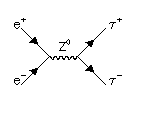
Such events are rather more difficult to identify than the electron pair and muon pair events that we've looked at so far.
We don't actually see the taus in our detector, because after travelling only a fraction of a millimetre a tau decays to produce other particles.
About 17% of taus decay in the following way:
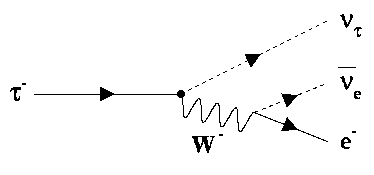
The neutrinos pass through the entire detector without interacting. Therefore, the only particle we see in the detector is the electron.
A further 17% of taus decay to produce a muon (which we see in the detector) and neutrinos (which we don't see):
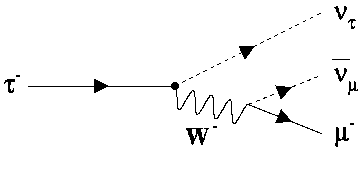
Here is an example event in which a tau-antitau pair is produced back to back. One tau decays to give an electron and the other tau decays to give a muon.
 Event Number 1
Event Number 1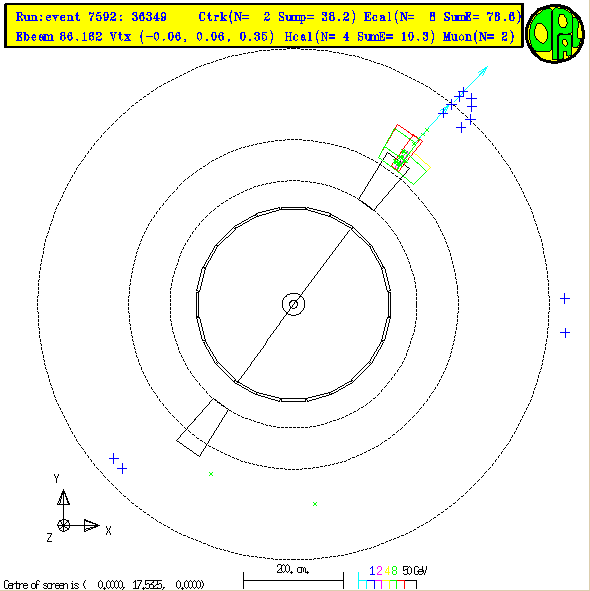
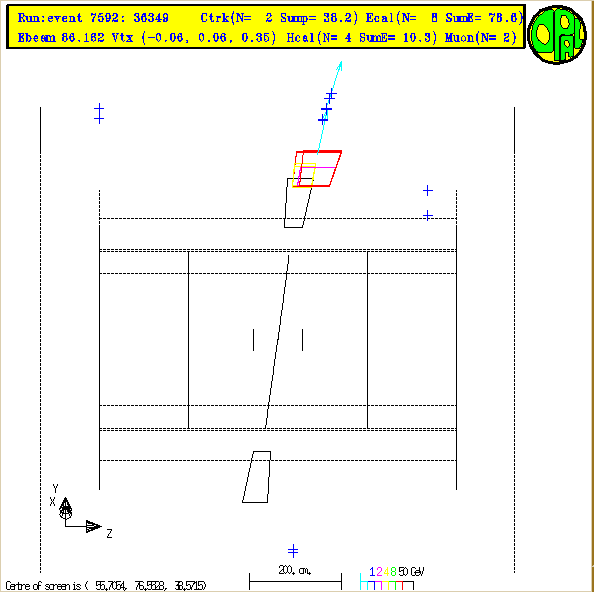
The remaining 66% of taus decay to produce a neutrino and one or more hadrons. In 50% a single charged hadron is produced and in 16% three charged hadrons are produced.
In the next example event the tau has decayed to produce three charged hadrons and the antitau has decayed to produce a single charged hadron.
 Event Number 2
Event Number 2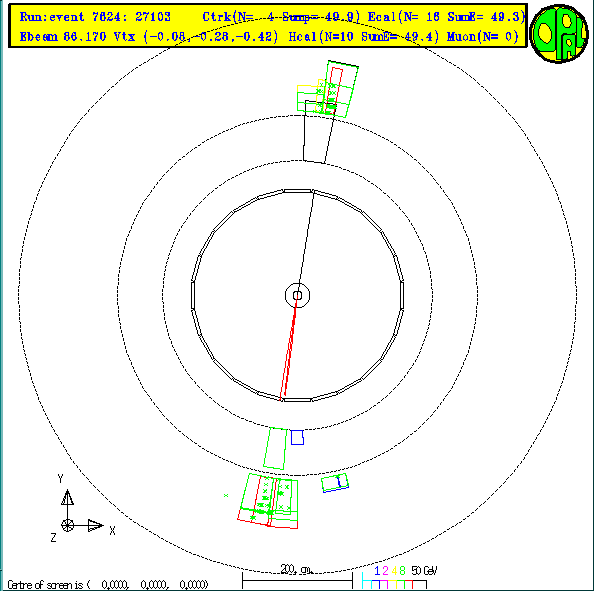
The three charged particle tracks from the tau decay can been seen more easily if we zoom in a bit closer.
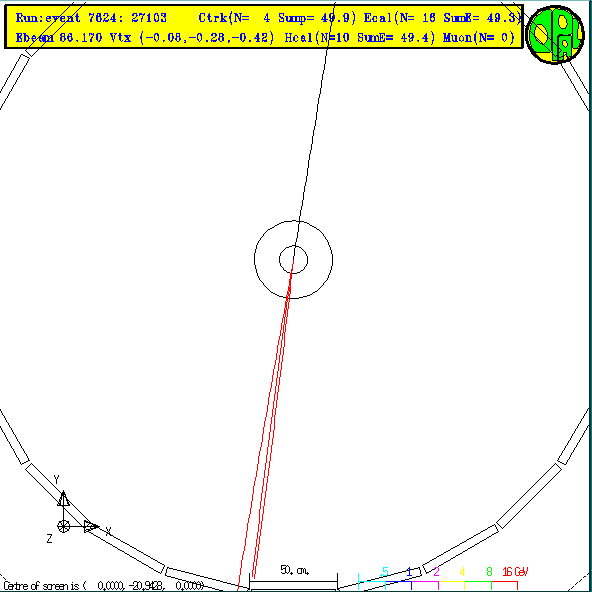

Now let's consider a class of
 events that are particularly difficult
to identify correctly.
What if the tau decays to produce a muon and the antitau decays to produce
an antimuon?
In our detector we will, therefore, observe a back-to-back muon-antimuon pair.
How will we distinguish such an event from one in which
a Z0 decays directly to a muon-antimuon pair?
Remember that the tau decays to produce two neutrinos in addition to the muon.
(Look back at the diagram for tau decay further up the page.)
Therefore the energy of the original tau is shared between the two neutrinos
and the muon.
Thus the momentum of a muon from the decay of a tau
is smaller than the momentum of a muon produced
when a Z0 decays directly to a muon-antimuon pair.
Here is just such an event.
Notice that, in this particular event,
both the muons have momentum of less than 16 GeV.
events that are particularly difficult
to identify correctly.
What if the tau decays to produce a muon and the antitau decays to produce
an antimuon?
In our detector we will, therefore, observe a back-to-back muon-antimuon pair.
How will we distinguish such an event from one in which
a Z0 decays directly to a muon-antimuon pair?
Remember that the tau decays to produce two neutrinos in addition to the muon.
(Look back at the diagram for tau decay further up the page.)
Therefore the energy of the original tau is shared between the two neutrinos
and the muon.
Thus the momentum of a muon from the decay of a tau
is smaller than the momentum of a muon produced
when a Z0 decays directly to a muon-antimuon pair.
Here is just such an event.
Notice that, in this particular event,
both the muons have momentum of less than 16 GeV.
 Event Number 3
Event Number 3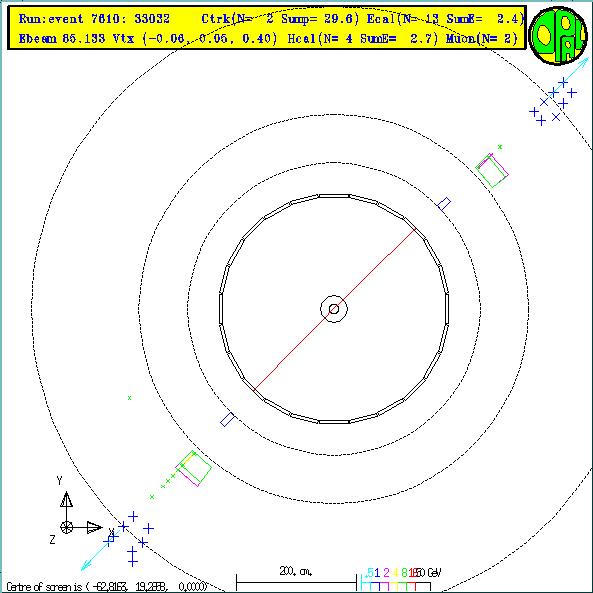
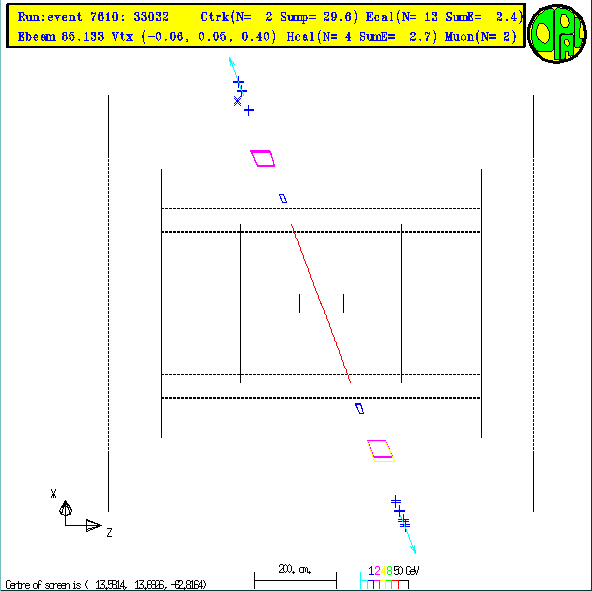
 Next take a look at some example
Next take a look at some example
 events.
events.
 Back to general section on "How to Identify Events Containing
a Particle-Antiparticle Pair".
Back to general section on "How to Identify Events Containing
a Particle-Antiparticle Pair".